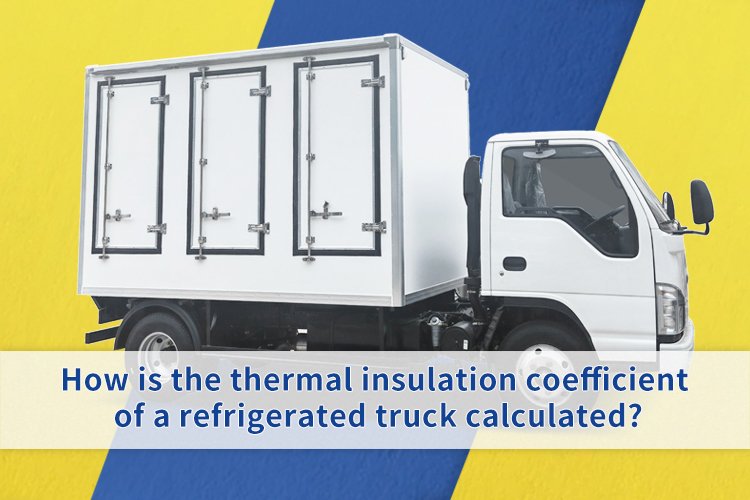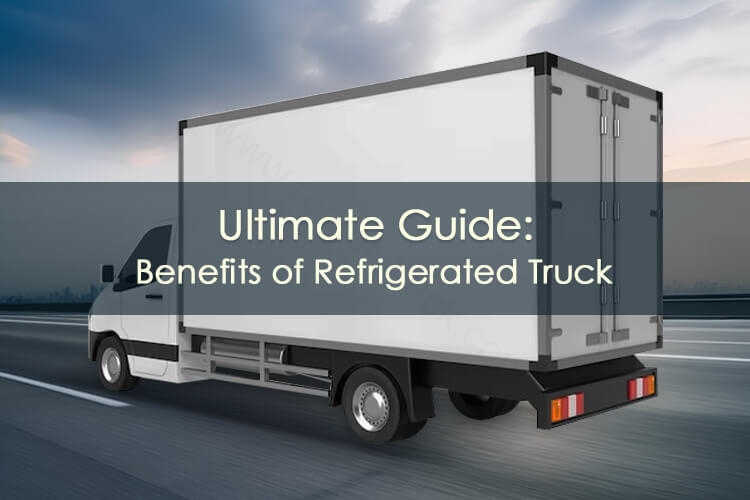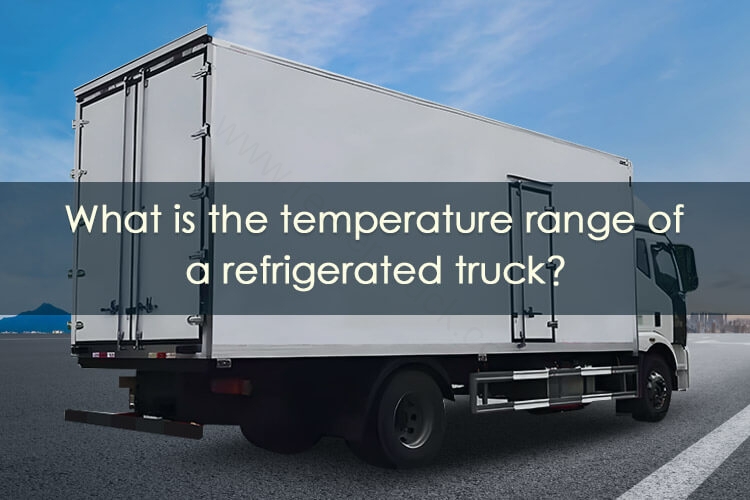How is the thermal insulation coefficient of a refrigerated truck calculated?
Maintaining stable temperatures is the core mission in cold chain transportation. It ensures the integrity of products, safeguards quality, and preserves shelf life. Therefore, the refrigeration system in refrigerated trucks is particularly crucial, relying not only on the refrigeration unit but also on insulation materials. Consequently, utilizing insulation with an optimal thermal resistance coefficient (K-value) is vital, as it determines both operational costs and cargo safety. Composite Box provides refrigerated truck body solutions with the best thermal resistance coefficient.
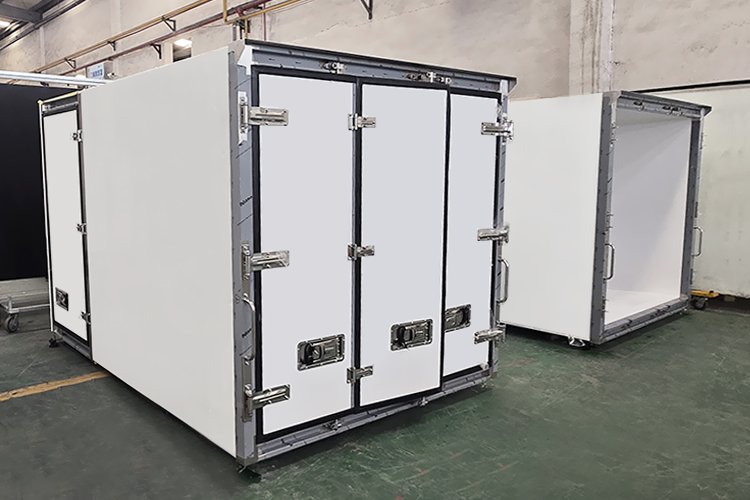
The Importance of K-Value for Refrigerated Vehicles
K-value (also known as thermal conductivity coefficient) measures the amount of heat transferred through a unit area of the vehicle body per unit time when there is a 1°C temperature difference between the interior and exterior. Its unit is W/m²·K.
The significance of this value manifests in three aspects:
- Temperature Stability: A lower K-value indicates greater resistance to external heat intrusion, resulting in more stable internal temperatures and superior insulation. This is particularly critical for transporting vaccines, perishable foods, and other temperature-sensitive goods.
- Reduced Energy Consumption: A refrigerated cargo compartment with a low K-value significantly minimizes heat ingress, thereby lowering the power consumption of the refrigeration unit and reducing electricity and diesel fuel usage. This decreases energy expenditure and supports sustainable development.
- Equipment Lifespan and Reliability: Reduced load on the unit decreases operational stress and wear, extending the lifespan of refrigeration equipment and lowering failure rates.
What is the K-value of a refrigerated truck?
The insulated cargo compartment of a refrigerated truck functions as a six-sided insulated box. The K-value directly reflects its thermal insulation performance, making it critically important. Naturally, the roof, floor, side panels, door panels, frame, and seams all contribute to the overall insulation capability.
A common misconception is focusing solely on the refrigeration unit’s power output. However, if the compartment’s K-value is too high (indicating poor insulation), even the most powerful refrigeration equipment cannot achieve optimal cooling results. This will still cause issues.
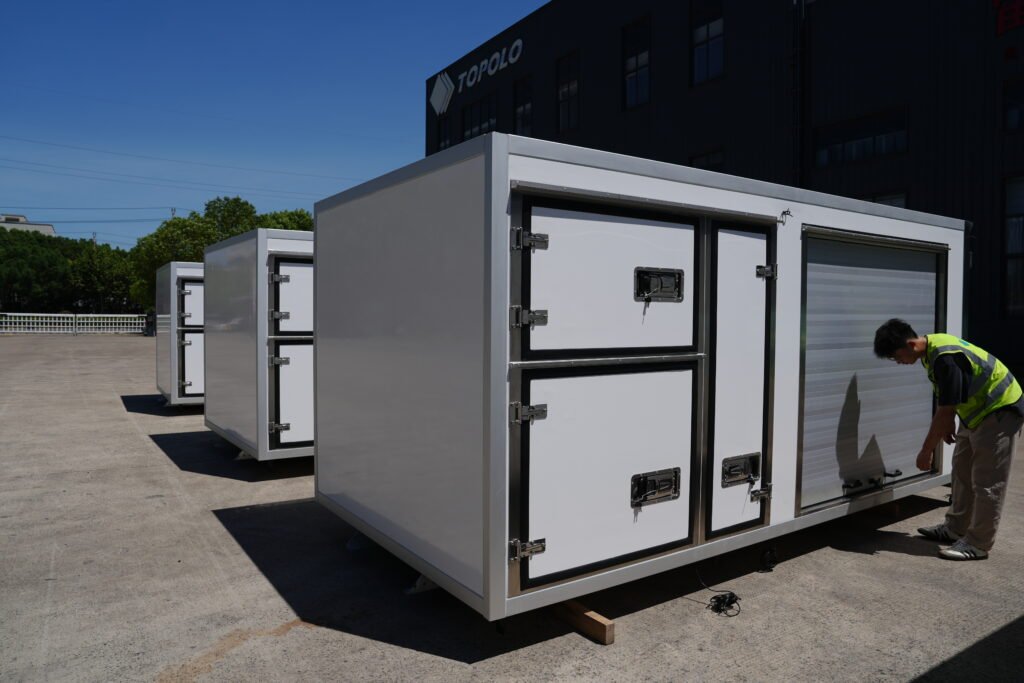
How is the thermal insulation coefficient K value calculated for refrigerated trucks and how is it obtained?
There are two primary methods for obtaining the K value: theoretical calculation and experimental measurement.
Theoretical calculation method: Primarily used for preliminary estimates during the design and material selection stages. Its core formula is:
K = 1 / (1/α_(inner) + Σ(δ/λ) + 1/α_(outer))
Where δ is the thickness of each material layer, λ is the thermal conductivity of the material (determined by the material itself), and α_(inner) and α_(outer) are the heat transfer coefficients of the inner and outer surfaces. By summing the thermal resistance of each layer, the total K-value can be estimated. However, this method cannot fully account for the effects of thermal bridges and manufacturing defects.
Experimental Measurement Method (Standard Method): This is the authoritative method for verifying a vehicle’s actual thermal insulation performance, typically conducted at national-level testing centers and referred to as a “heat leakage test.” The vehicle is placed in a constant-temperature environment, with heating or cooling applied inside the cabin to establish a stable temperature difference between the interior and exterior (e.g., interior 30°C, exterior -20°C, temperature difference 50°C). The precise power (P) required to maintain this temperature difference is then measured.
The final K-value is calculated using the formula:
K = P / (S × ΔT)
P: Heating/cooling power (Watts, W)
S: Total cabin surface area (square meters, m²)
ΔT: Temperature difference between cabin interior and exterior (Celsius, °C or Kelvin, K)
Example: If measured power P = 2000W, surface area S = 70m², and temperature difference ΔT = 50°C, then K = 2000 / (70 × 50) ≈ 0.57 W/m²·K. When purchasing a vehicle, users must request a heat leakage test report issued by an authoritative institution. This measured K-value serves as the true testament to the vehicle’s performance.
Core Insulation Elements of Refrigerated Truck Bodies
The thermal insulation performance of a cargo compartment is primarily determined by three core factors:
- Insulation Material: Polyurethane foam is currently the mainstream choice. Its thermal conductivity (λ) directly correlates with insulation effectiveness—lower λ values indicate superior insulation. High-quality PU foam achieves λ values below 0.022 W/m·K. Additionally, within volume and weight constraints, increasing insulation layer thickness enhances thermal retention.
- Panel Manufacturing Process: The “integral foam injection” process outperforms “segmented injection.” Integral foaming allows the foam to be formed in a single step within the mold, creating a seamless, unified insulation layer. This effectively eliminates thermal bridges, ensuring a lower and more uniform K-value.
- Thermal Break Design and Sealing: The metal frame of the cargo compartment creates “thermal bridges” that facilitate rapid heat transfer. Advanced “thermal break” designs effectively interrupt this heat conduction. Furthermore, sealing details at door gaskets, riveted joints, drain holes, and other critical points are paramount—any gaps will degrade the actual K-value.
Refrigerated Truck Bodies: Selection and Application
Key Selection Criteria:
- Top Priority: Insist on obtaining and verifying K-value test reports issued by third-party inspection agencies—this is the most critical basis.
- Compare Parameters: Among comparable models, prioritize products with lower K-values as indicated in reports.
- Inspect Details: On-site, check for smooth panel joints, tight and flexible door seals, and whether the frame incorporates thermal break design.
Application and Maintenance:
- During daily operations, if the refrigeration unit cycles on and off abnormally frequently or fuel consumption increases significantly, be alert to whether this is caused by reduced insulation performance (actual increase in K-value).
- Regularly inspect and clean door seals to ensure they are undamaged, free of debris, and maintain proper sealing integrity.
- Avoid impacts or scrapes to the cargo compartment to prevent compromising the structural integrity of the insulation layer.
Conclusion
The thermal insulation coefficient (K-value) of a refrigerated truck is far from a mere cold statistic—it is the guardian of quality and efficiency in cold chain transportation. While low-K-value cargo compartments, achieved through scientific calculations and rigorous testing, may require a slightly higher initial investment, they deliver returns far exceeding that investment over their extended operational lifecycle. This is realized through energy savings, enhanced cargo protection, and reduced maintenance costs. Any conversion facility or logistics company understands that selecting a low-K-value refrigerated truck body adds significant profit potential and safety assurance to their operations.

